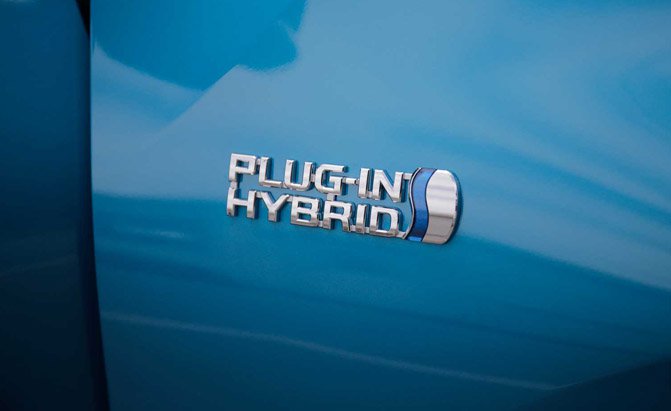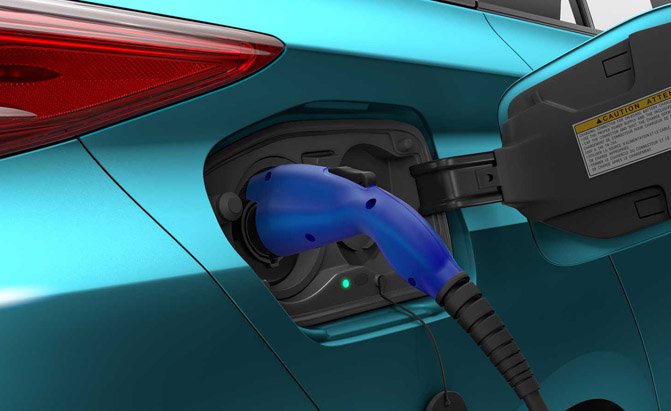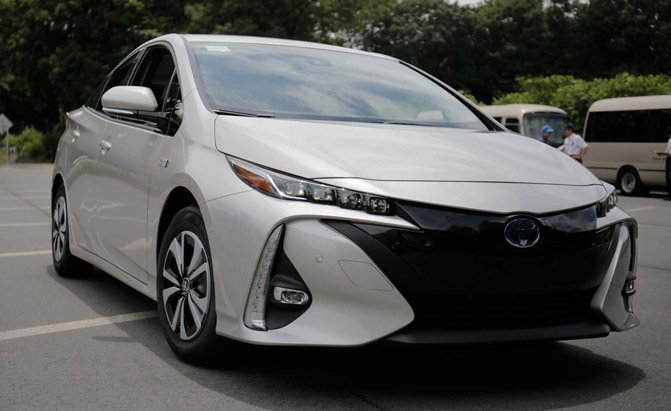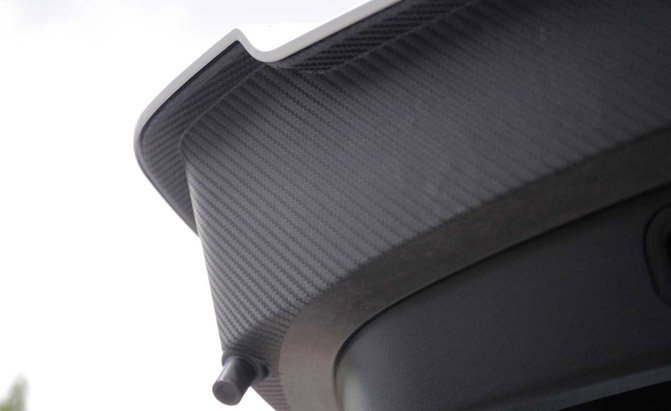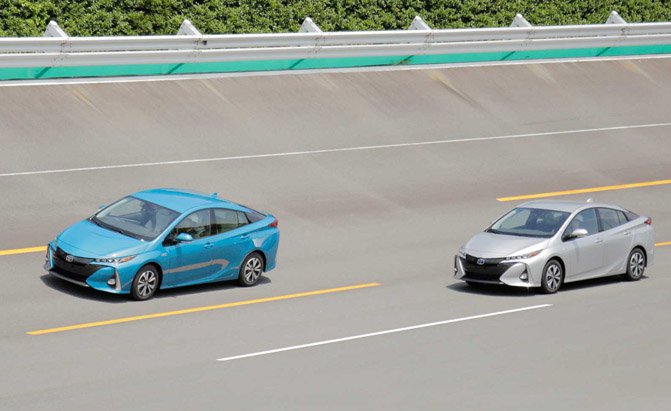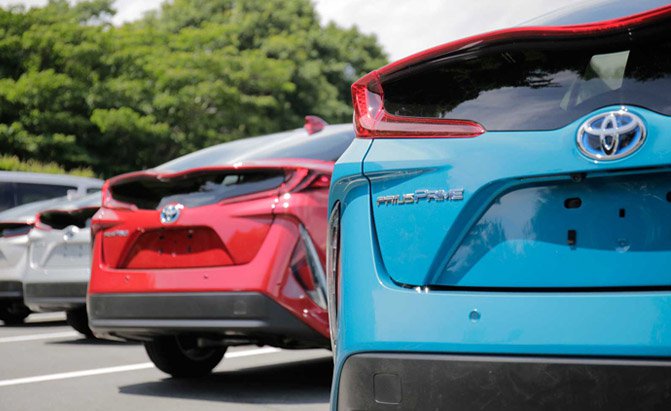There was an unexpectedly long delay as Koji Toyoshima, chief engineer of the Toyota Prius and Prius Prime, conferred with his colleagues.
After half a minute or so of fuss, the result of this chatter was a succinct “no” from the company’s translator; their latest plug-in electric model will not offer a “ludicrous” acceleration mode similar to what’s available in the Tesla Model S. Damn, and I thought that question was sure to make him chuckle.
Efficiency enthusiasts everywhere are sure to be devastated by this news, but the Prius family is about saving as much gasoline as possible, not causing speed-induced vertigo. To showcase its latest plug-in model, a select group of media were invited to Japan for a quick test drive of the new 2017 Prius Prime.
Nuts and Bolts
This car is a replacement for the Prius Plug-In. The name change is designed to reflect its newness and innovation, but at a macro level, you can think of the Prime as a hybrid with enhanced electric-only range.
Emphasizing this, there are several parallels to standard Prius. Under its hood, you find the same 1.8-liter gasoline engine, the car’s interior is largely the same, plus it delivers eye-opening fuel economy numbers. But aside from all of this, there are plenty of technical differences.
SEE ALSO: 2016 Hyundai Sonata Plug-In Hybrid Review
Arguably, the Prime’s biggest modification is found under its cargo floor — the battery is much larger. Sporting lithium-ion chemistry, it clocks in at 8.8 kWh, enough to provide an estimated electric-only range of 22 miles, twice what the Prius Plug-In could muster. Despite this increase, it’s only 35 kilograms heavier, roughly 77 pounds more.
Once the Prime’s electric-only power reserve is depleted, it operates as a standard hybrid. Accordingly, it’s projected to average around 120 MPGe, a class-leading figure, though official consumption scores have not been finalized by the EPA. With a full tank of gasoline, this car is expected to offer a total driving range in excess of 600 miles.
If the Prime’s electric-only figure sounds a little low, it kind of is. The Chevy Volt, for instance, offers a claimed range of 53 miles; in hybrid form, BMW’s i3 can do up to 72.
Still, according to Toyoshima, this Prius should meet the daily commuting needs of more than 50 percent of drivers in the U.S. Engineers had their eye on a larger battery, but there were several reasons they decided not to cram one in, chiefly because it would have impinged on interior space. As it is, the Prime can only seat four passengers, with a small console replacing the center rear seat. Additionally, accommodating a larger pack would likely have necessitated a redesign of the underlying vehicle architecture, a costly endeavor.
As it stands, this battery can be topped-off from a standard household outlet in about five and a half hours, but if you have access to a 240-volt charger, that time is reduced by more than half.
Another major change to the Prime is found in its transmission. While in electric mode, both of its integrated motor-generators are used for forward propulsion, unlike other versions of the Prius. For lovers of speed, it can hit 84 miles an hour while running purely on electrons.
Further enhancing its efficiency and range is a heat p
ump instead of a conventional, energy-sapping HVAC system. This arrangement provides warmth in cold weather and a cool breeze during the swelter of summer. Think of it as air conditioning system that works in reverse. Heat pumps have a much less detrimental effect on battery life compared to traditional resistance-type heaters.
Style Per Gallon
Visually setting the Prime apart from other Prius models is unique exterior styling. This car gets a new front end, updated rear and some standout technology. Fore and aft, LED lighting cuts through darkness, with special quad-element headlamps giving it a high-tech look.
Interestingly, the back glass is curved, with a wave-like pattern to it. This is something that’s not found on many vehicles today. It looks incredibly cool and enhances the vehicle’s aerodynamics.
Helping reduce mass, the Prime’s hatch is made from carbon fiber-reinforced plastic, a material that’s renowned for its strength and light weight. Overall, this car clocks in an estimated 3,362 pounds, which is about 352 more than the lightest version of the standard Prius, an Eco-trim model. It’s also roughly 197 pounds huskier than the last-generation Plug-In.
To our eyes, the Prime is considerably more attractive than the standard Prius, which is a festival of odd styling cues. Unfortunately, there are no plans to migrate this design over to other versions of the car. Toyota representative said they want to set the Prime apart and styling is part of how they’re doing that.
SEE ALSO: 2016 Chevrolet Malibu Hybrid Review
As for creature features, an 11.6-inch, high-definition screen is available. It dominates the center stack with vibrant color and a finger-friendly interface. It includes a navigation system along with a heads-up display. Additionally, Toyota Safety Sense P will be standard on the Prius Prime. This suite of advanced driver-assistance technology includes goodies like adaptive cruise control, automatic high beams, pre-collision alert with pedestrian detection and more.
Drive Me Lazy
Putting the Prime in motion on a test track revealed that it drives almost exactly like a regular Prius, which isn’t a bad thing.
Acceleration in EV mode is a nearly silent affair; the only sound emitted is a contented whirr from the electric motors. The zero-to-60 sprint should be comparable to a standard model, which is in the neighborhood of 10 seconds. However, when in EV mode the Prime feels noticeably quicker, particularly at lower velocities, thanks to its abundant torque.
For comparison purposes, the company had a previous-generation Prius Plug-In on hand and curiously it felt noticeably faster than the Prime, though it shouldn’t be. This sensation is probably because it’s much less refined – louder and rougher with a considerably more engine thrash.
For maximum flexibility, drivers can select how the Prime’s powertrain operates. There are actually three different settings to choose from. As mentioned, EV allows the car to run exclusively on battery power; once its 22 miles of range is depleted, it operates as a conventional hybrid. Next is EV Auto, which focuses on electric operation but allows the engine to run in situations where it’s more efficient, like when climbing a hill. Finally, there’s HV Mode, which simply allows the Prime to operate like a standard Prius, preserving its battery reserve for electric operation.
Ov
erall, the Prime feels a bit more refined than a standard Prius. The extra weight it carries seems to help smooth out bumps and give it a more planted feel; compared to its Plug-In predecessor, it’s nearly a luxury car. About the only real gripe is the steering, which is totally devoid of any feel.
The Verdict: 2017 Toyota Prius Prime Review
The Prime may not just be Toyota’s most economical Prius, it could be the best one ever. It’s more efficient, easier on the eyes and loaded with many popular features. If priced right, there’s no reason not to buy one if you’re in the market for a hybrid car.
While official pricing information has not been released, the Prime should cost about as much as its Plug-In predecessor, which kicked off around $30,000. Icing on the cake, it also qualifies for a $4,500 federal tax credit as well as other state and local incentives. Broadening its appeal, the Prime will be available to drivers in all 50 states when it goes on sale this fall.
Discuss this story on our Toyota Prius Forum








